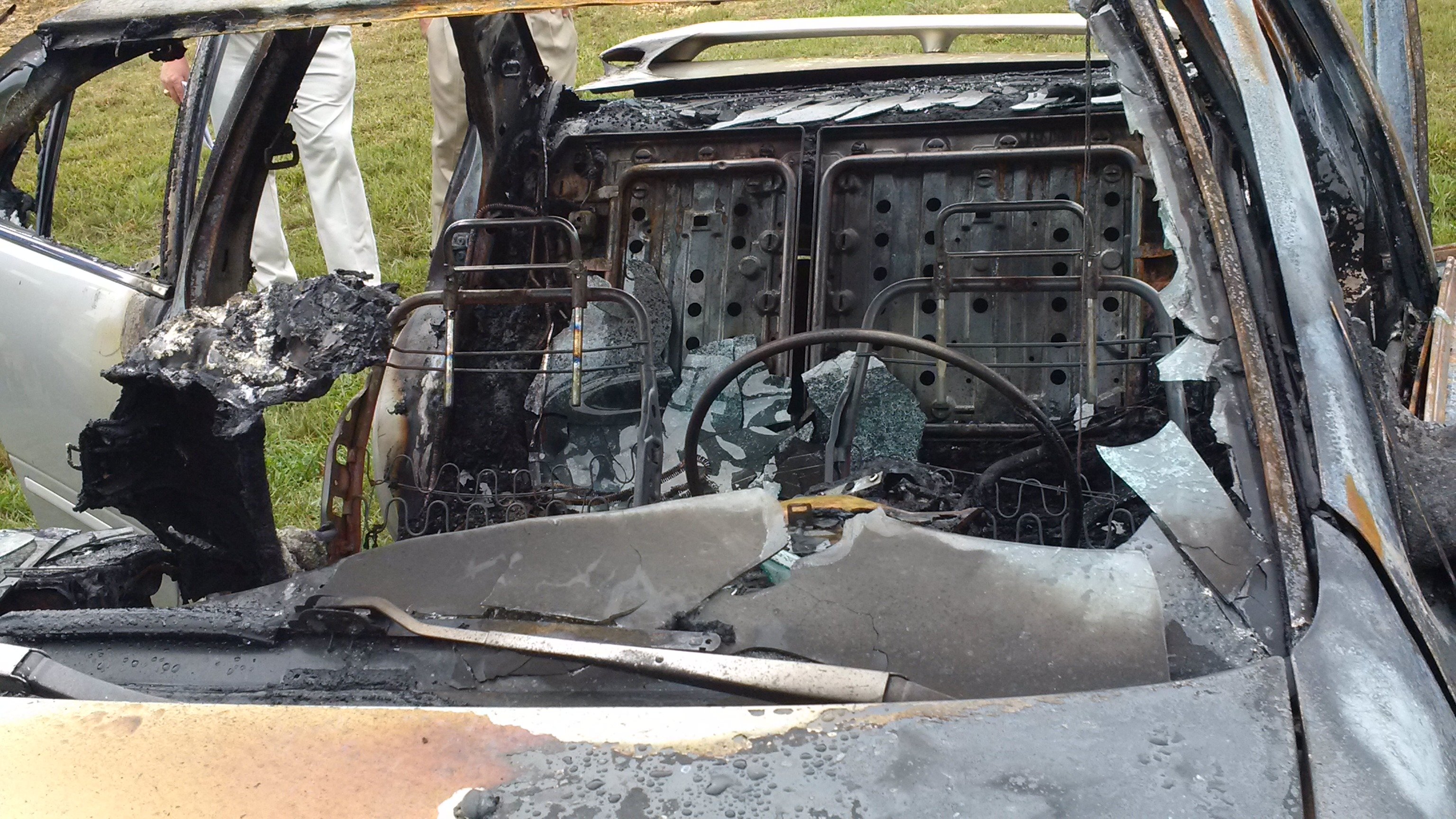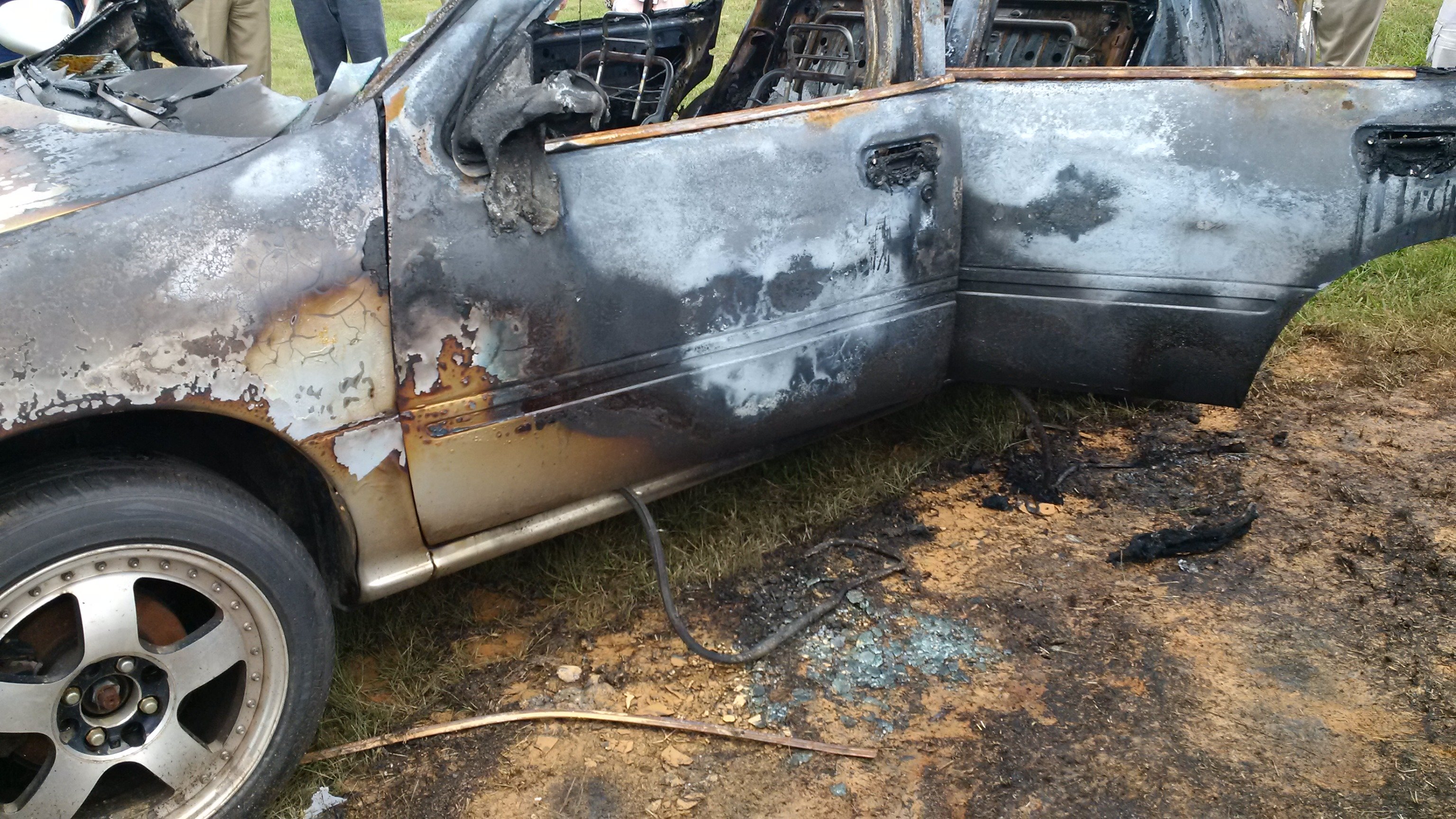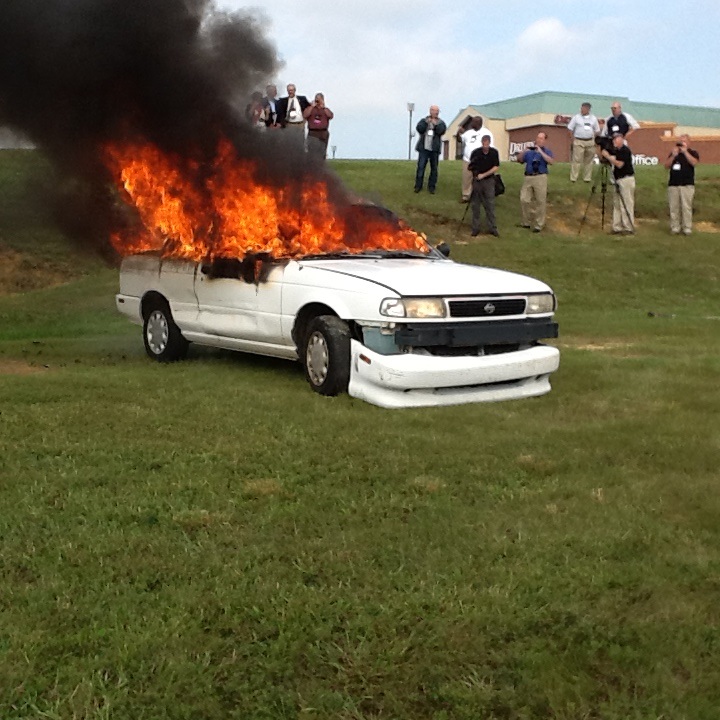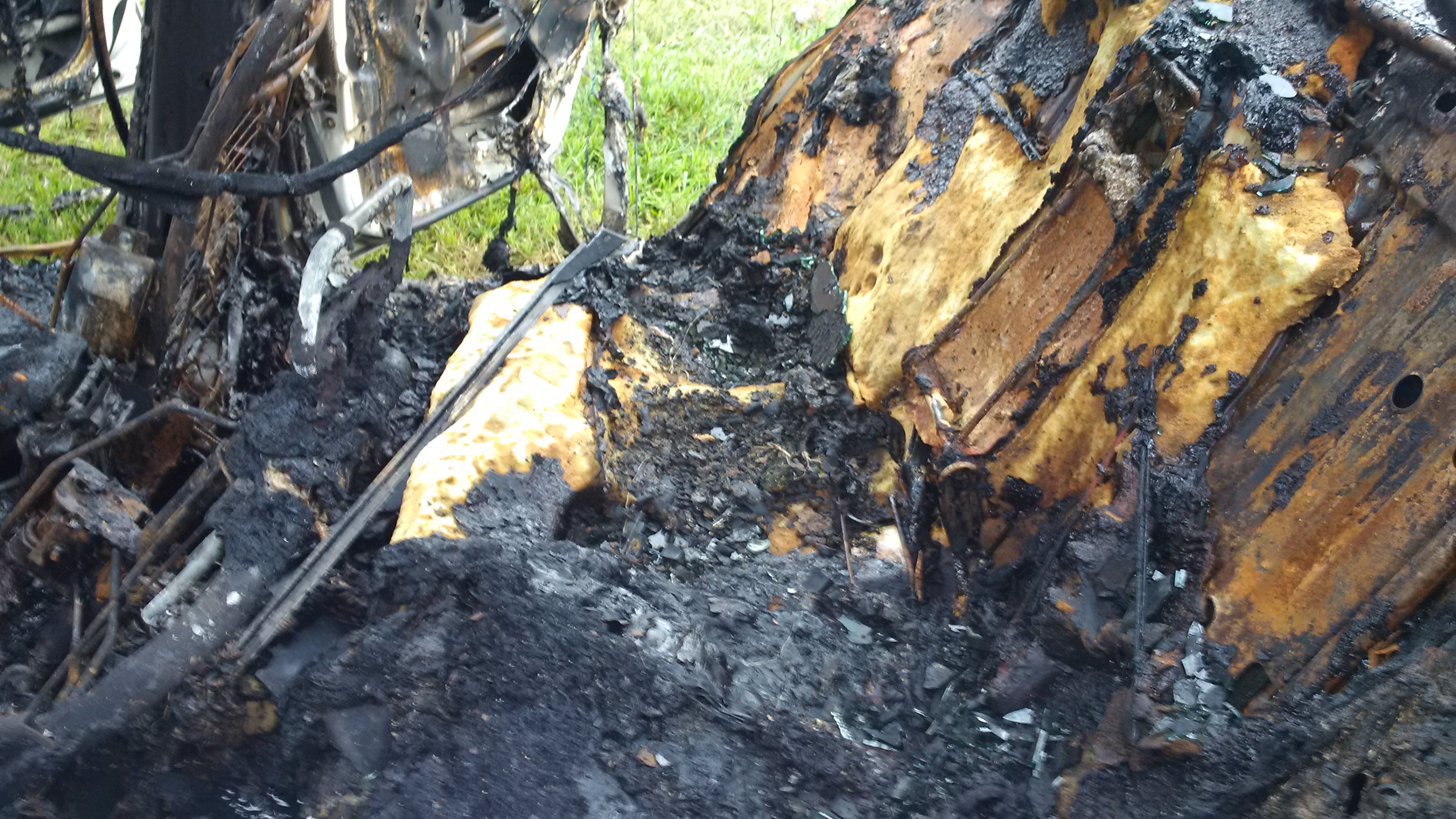When it comes to determining the cause and origin of a vehiclefire, there is a lot more evidence available than one might thinkat first glance. A session at the recent International Associationof Special Investigation Units (IASIU) Seminar and Expo providedinvestigators with the knowledge they needed to conduct effectiveexaminations of vehicle fire scenes.
|Chris Elrod and Ian Tedder are both former fire fighters, andTedder also worked in law enforcement. That training plus theknowledge they've honed over hundreds of investigations allowedthem to provide critical information for gathering the factsfollowing a vehicle fire.
|Frequently with vehicle fires there are two scenes to beinvestigated – where the fire event actually occurred and where thevehicle was recovered (or taken) after the fire. The amount of timebetween when a vehicle is recovered and when the investigator canget to the site often works against the investigator becauseevidence degrades and the vehicle oxidizes from the damage, skewingthe findings.
|All fires need fuel, heat and oxygen. In vehicle fires, theissues expand to include time, temperature and mass – how long didthe fire burn, what were the temperature and direction of the wind,and what kind of vehicle was involved? Newer cars are built forfuel consumption and contain a lot of plastic (so they burn morequickly) compared to older cars that are heavier and contain moremetal, so they take longer to burn.
||
Photographs are critical to documenting evidence and should betaken both at the fire scene and the recovery site. Questions toask local authorities include:
- Were local investigators called?
- If so, what documentation is available?
- Was evidence recovered from the scene?
- Was the vehicle reported stolen?
- Was there fuel spillage?
- Were absorbent pads used and if so, what happened to them?
At the scene, look for items that might be missing from thevehicle. A lack of aftermarket equipment, tires in poor condition,missing electronic components and personal items could be anindication of arson. More than one set of tire tracks could be anindication of a second (getaway) vehicle. Also look for fuel cansnearby or in the vehicle and jack marks on the car.
||It's easy for fire scenes to become contaminated, whether it'sthe fire company responding or the wrecker who takes the vehicle toa storage facility, there will be other footprints and tire tracks.Sometimes the wreckers will throw any trash and debris on site intothe vehicle, contaminating the interior. Fire evidence is veryfragile and easily contaminated. If possible, request that they putanything found on the flatbed next to the car instead of insideit.
|Most arsonists assume that everything will go up in flames inthe vehicle. In reality, there are often layers of evidence leftafter a fire. A trained investigator knows where to look and whatto look for inside a vehicle.
|Weather and time can destroy some of the evidence, but it isstill possible to identify burn patterns. Whether or not a vehiclewas sitting on a level surface will impact the burn patterns. Lookat the windows and door trim to see which way the fire traveled. Isone side of the car severely burned and the other relativelyuntouched? Did one side of the interior burn more than the other?Are the windshield and dashboard area burned? Were the windows upor down?
|Engine fires frequently have a circularized pattern and therewill be burning in the engine compartment. Investigators shouldhave a working knowledge of the operating systems in a car in orderto rule them out as a possible cause of the fire. They should alsobe aware of any vehicle recalls in case they contributed to thefire.
||
A fire that started in a fuel tank may have a “V” pattern aroundthe fuel door. This is caused by vapors venting from the fuel tank.The “V” may start at the top of the filler neck. They may also beseen above the wheel wells due to burning tires.
|Many owners collect documents, food wrappers and other debris intheir vehicles. If a fire was started intentionally and newspaperwas used to help ignite it, it's possible to recover enough of thepaper to find an actual date. Some claimants will say their carswere stolen and that they still have the keys. Check the ignitionto see if the keys are there, have fallen on the floor and if thecar is in drive or park. If the car was stolen, there should bedamage to the D-ring and wafers for the ignition.
|The next page shows several videos demonstrating how a car canbe set on fire and the amount of time passing from ignition tobeing fully engulfed.
||Here the ignition source for the fire has just been lit. The carsmolders for a few minutes before flames can be seen.
|Within a matter of moments, flames appear on the interior of thecar. 
In approximately 8 minutes, this car went from smoldering tobeing fully engulfed.
|It took firefighters just moments to put out the fire. 
A burned vehicle interior can yield a number of clues to atrained investigator. This vehicle was burned two days earlier thanthe car in the previous slide. Can you tell where the fire startedand how it spread?
Want to continue reading?
Become a Free PropertyCasualty360 Digital Reader
Your access to unlimited PropertyCasualty360 content isn’t changing.
Once you are an ALM digital member, you’ll receive:
- All PropertyCasualty360.com news coverage, best practices, and in-depth analysis.
- Educational webcasts, resources from industry leaders, and informative newsletters.
- Other award-winning websites including BenefitsPRO.com and ThinkAdvisor.com.
Already have an account? Sign In
© 2024 ALM Global, LLC, All Rights Reserved. Request academic re-use from www.copyright.com. All other uses, submit a request to [email protected]. For more information visit Asset & Logo Licensing.








